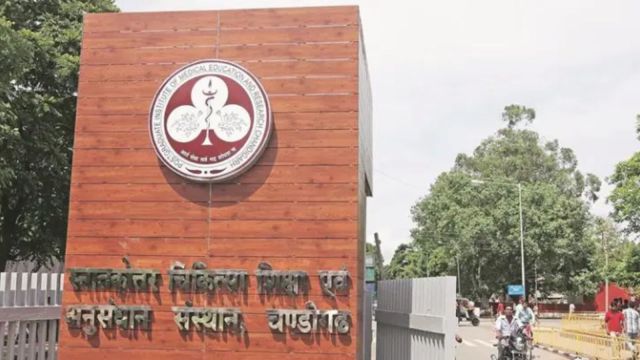74% of men, 65% of women in Chandigarh are physically active, says PGI NCD registry report
Seventy-four per cent of men and 65% of women in Chandigarh have been classified as physically active as per the latest Non-Communicable Disease (NCD) Registry Report released jointly by PGIMER and the UT Health Department, indicating a relatively high proportion of the population engaging in regular physical exercise. The data highlights a promising trend toward […]
 Doctors recommend 150 minutes of moderate to vigorous exercise per week, apart from a healthy diet, that is low on sugar and oil, and high on fruits, vegetables and protein.
Doctors recommend 150 minutes of moderate to vigorous exercise per week, apart from a healthy diet, that is low on sugar and oil, and high on fruits, vegetables and protein.Seventy-four per cent of men and 65% of women in Chandigarh have been classified as physically active as per the latest Non-Communicable Disease (NCD) Registry Report released jointly by PGIMER and the UT Health Department, indicating a relatively high proportion of the population engaging in regular physical exercise.
The data highlights a promising trend toward fitness and healthy living among Chandigarhians. The report is part of an ongoing effort by the PGI School of Public Health, which has been working for several years to track and prevent non-communicable diseases such as diabetes, heart ailments, cancer, and kidney disorders through systematic data collection and analysis.
Released recently in collaboration with the World NCD Federation, Chandigarh’s second NCD Registry sheds light on key lifestyle trends influencing public health. Prof J S Thakur from the School of Public Health said, “An active lifestyle is one of the most effective ways to prevent lifestyle-related diseases such as cardiovascular illnesses, cancer, diabetes, and chronic kidney disease. Chandigarh’s figures reflect encouraging progress in this direction.”
Living a sedentary lifestyle, stress experts, can cause several health issues, with lack of movement and sitting for long periods of time causing harm to the heart. Doctors recommend 150 minutes of moderate to vigorous exercise per week, apart from a healthy diet, that is low on sugar and oil, and high on fruits, vegetables and protein.
Dr Amit Garg, senior associate director, bariatric and metabolic surgery, Park Hospitals, highlights that a recent study in the Lancet puts an alarming 70 per cent of India’s urban population in the obese or overweight bracket, and India is just behind the US and China in this global hazard list of the top 10 countries with the highest number of obese people. “It is a common myth that obesity is a rich man’s disease. Obesity is not only caused due to overeating, but also due to adopting wrong eating habits. Losing even 5-10 per cent of your weight can delay or prevent diabetes, hypertension, cardiovascular disease etc,” he says.
Dr Leena Kotru, a dietician, says that diabesity (diabetes obesity) is prevalent in 60 per cent of diabetic patients in India, out of whom around 25-30 per cent have a high BMI index of more than 30 and regular physical activity, and a healthy lifestyle can prevent diabesity.
20% residents smoke, 24% consume alcohol
While the city performs well on physical activity indicators, the report also raises concerns. Around 20% of residents still smoke, and 24% consume alcohol, posing continued public health challenges. Experts say that regular physical activity, a balanced diet, and avoidance of tobacco and alcohol can significantly reduce the risk of non-communicable diseases. Although the physical activity rate is commendable, Prof Thakur emphasises the need for community-level programmes and awareness campaigns to further promote active living. He adds, “The goal of the NCD Registry is not just data collection but also to guide public health policy and planning. If residents maintain at least 30 minutes of brisk walking, cycling, or yoga daily, Chandigarh can truly become a model of fitness.”
Next step: Promoting fitness in schools and offices
The NCD Registry plays a key role in understanding the city’s health behaviour and shaping better policy decisions. In the next phase, physical activity promotion programmes will be launched in schools and workplaces to encourage young people to adopt healthier routines.







